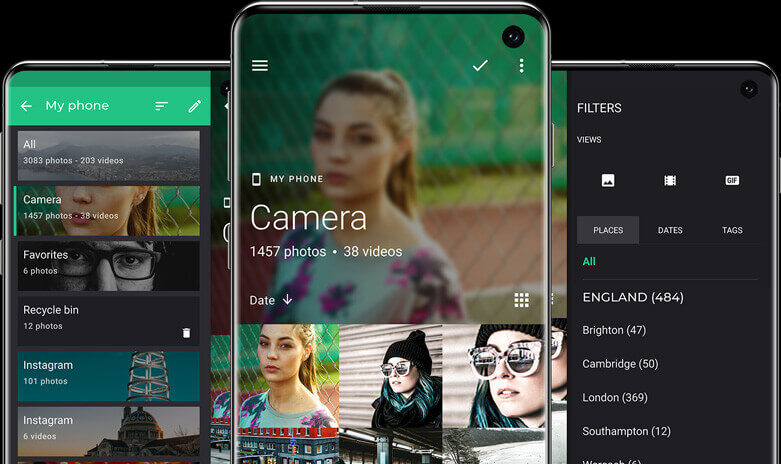The growth of social media users and smartphones as our primary cameras in the digital age have resulted in an ever-growing collection of photos and videos. As our media libraries develop, effective categorization and management become increasingly essential. This article covers the latest advancements in photo management software, highlighting crucial capabilities that alter how we store, access, and enjoy our digital memories.

Cloud Integration: Seamless Access Across Devices
One of the most significant developments in photo management is cloud integration. Modern apps now enable seamless connectivity with numerous cloud services, ensuring your memories are always at your fingertips. Some of these features include:
- Google Drive photos integration allows for easy backup and access across devices.
- Sync with Google Photos for intelligent organization and search capabilities.
- Connect to other popular cloud services like Dropbox and OneDrive.
Cloud integration not only provides a safety net for your memories but also frees up important space on your device.
Advanced Media Players: More Than Just Photos
Today’s photo management apps go beyond static images, offering robust video playback features. Some of the most popular features are:
- Built-in HD video player for high-quality viewing experiences.
- Support for multiple video formats and codecs.
- Picture-in-picture option for juggling multiple tasks while watching videos.
These powerful media players transform your photo app into a comprehensive entertainment center, removing the need for separate video apps.
Intelligent Organization: Effortlessly Manage Photos
Modern photo apps employ smart algorithms to help users organize their vast collections. Some efficient techniques for media management are:
- Automatic categorization is based on people, places, and events.
- Face recognition for easy tagging and searching.
- Location-based sorting for reliving your travel memories.
By leveraging these intelligent features, users can effortlessly manage photos without spending hours manually organizing their libraries.
Enhanced Viewing Experience:
Photo management apps now offer various viewing options to suit different preferences, such as:
- Multiple layout options (grid, list, timeline)
- Advanced slideshow features with customizable transitions
- Support for panoramas and 360-degree photos
These viewing enhancements allow users to enjoy their photos in new and exciting ways, breathing life into static collections.
Privacy and Security: Protecting Your Memories:
With the increasing concern over digital privacy, photo management apps have stepped up their security features. These robust measures include:
- Secure folders such as gallery vault for sensitive photos and videos
- Encryption options for added protection
- Ability to hide specific albums or folders from the main gallery
These privacy features ensure that your memories remain just personal
The Ultimate Movie Player Experience:
Many photo management apps now include a robust movie player, offering:
- Support for a wide range of video formats
- Playlist creation for marathon viewing sessions
- Subtitle support for foreign language films
This eliminates the need for a separate video player app, optimizing your media consumption experience.
Conclusion:
The emergence of photo management apps has revolutionized how we interact with our digital memories. From cloud integration to complex organization tools, these apps have become important in our daily lives. By using features like gallery vault, Google Drive photos integration, intelligent photo management, and comprehensive media playback, users can now effortlessly organize, secure, and enjoy their ever-growing media memory collections. As technology continues to upgrade, we can only expect these apps to become even more intuitive and feature-rich, thus boosting our digital experiences.
